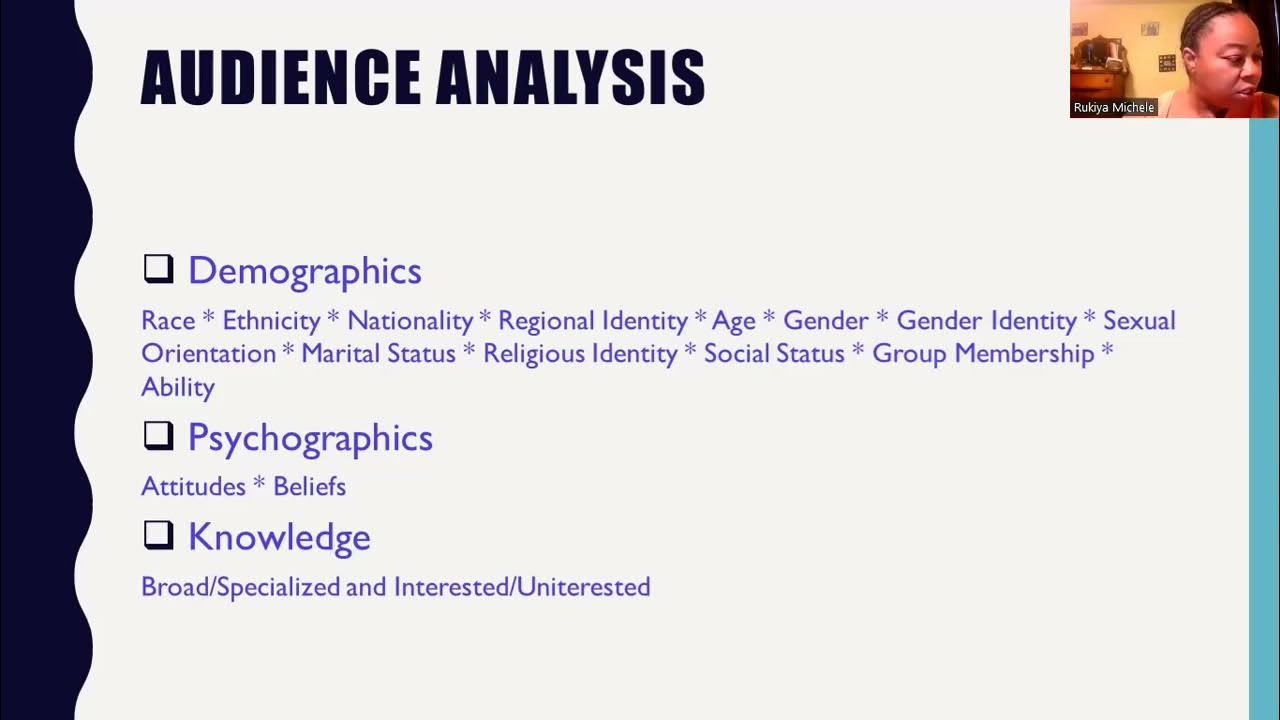Group 6 - Consumer Attitude Formation And Change
Summary
TLDRIn this engaging presentation, Group 6 explores consumer attitudes, highlighting their formation, characteristics, and strategies for change. They define attitudes as predispositions towards products influenced by personal experiences and social interactions. The group discusses various models of attitudes, including the Tricomponent Model and the Multi-Attribute Model, emphasizing the role of cognitive dissonance and attribution in consumer behavior. By understanding these dynamics, marketers can effectively influence consumer perceptions and behaviors, ultimately enhancing their marketing strategies. The presentation concludes with a focus on the importance of these insights in navigating consumer relationships.
Takeaways
- 😀 Consumer attitudes are predispositions that influence behavior towards products, brands, and marketing concepts.
- 🛍️ Attitudes can be shaped by personal experiences, such as product satisfaction or dissatisfaction.
- 💬 Word of mouth plays a significant role in forming consumer attitudes through shared experiences and recommendations.
- 🔄 Attitudes are generally consistent but can change based on situational factors and personal circumstances.
- 🚗 Cultural preferences, such as a tendency to favor Japanese cars over Korean ones, illustrate consistent consumer behavior.
- 📊 The Tricomponent Attitude Model includes affective (feelings), behavioral (actions), and cognitive (beliefs) components.
- 🧠 Cognitive dissonance occurs when consumers hold conflicting beliefs, prompting a desire for consistency in attitudes.
- 👥 Attribution theory explains how consumers form attitudes based on their own and others' behaviors.
- 📰 Advertising influences consumer attitudes, with effective communication strategies based on personal and social factors.
- 📈 Changes in consumer attitudes can be driven by motivational functions, product associations, and addressing conflicting beliefs.
Q & A
What is the main topic discussed by Group 6 in the presentation?
-The main topic is consumer attitudes, specifically focusing on how these attitudes are formed and changed.
What are the key characteristics of attitudes mentioned in the transcript?
-Key characteristics include predisposition or learning, consistency of attitudes with behavior, and the influence of situational factors.
How can personal experiences affect consumer attitudes?
-Personal experiences, such as satisfaction or dissatisfaction with a product, can significantly shape consumer attitudes towards that product.
What is 'word of mouth,' and how does it influence consumer attitudes?
-Word of mouth refers to verbal communication among consumers about products, and it influences attitudes as people tend to trust recommendations from friends and family.
What models of consumer attitudes are discussed in the presentation?
-The presentation discusses several models, including the Tricomponent Attitude Model, the Multiattribute Attitude Model, and the Attitude Toward Behavior Model.
What role do personal factors play in shaping consumer attitudes?
-Personal factors, such as a consumer's need for cognition or their preferences, play a significant role in forming positive attitudes toward products.
What strategies are mentioned for changing consumer attitudes?
-Strategies include altering motivational functions, associating products with admired groups, and resolving conflicting attitudes.
What is cognitive dissonance, and how does it relate to consumer behavior?
-Cognitive dissonance is the discomfort experienced when holding conflicting beliefs about a product, which can lead consumers to change their attitudes to resolve the inconsistency.
What is the significance of the Attribution Theory in understanding consumer attitudes?
-Attribution Theory explains how consumers assign causes to their own or others' behaviors, which influences their attitudes towards products based on these evaluations.
How do situational factors affect consumer choices according to the transcript?
-Situational factors, such as price and availability, can lead consumers to choose alternatives, even if they have a preference for another product.
Outlines

This section is available to paid users only. Please upgrade to access this part.
Upgrade NowMindmap

This section is available to paid users only. Please upgrade to access this part.
Upgrade NowKeywords

This section is available to paid users only. Please upgrade to access this part.
Upgrade NowHighlights

This section is available to paid users only. Please upgrade to access this part.
Upgrade NowTranscripts

This section is available to paid users only. Please upgrade to access this part.
Upgrade NowBrowse More Related Video
5.0 / 5 (0 votes)





